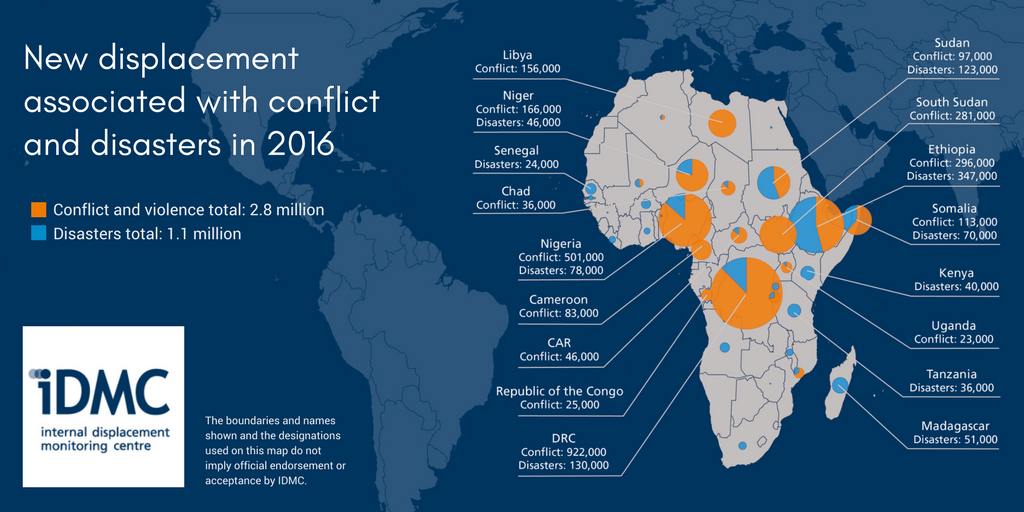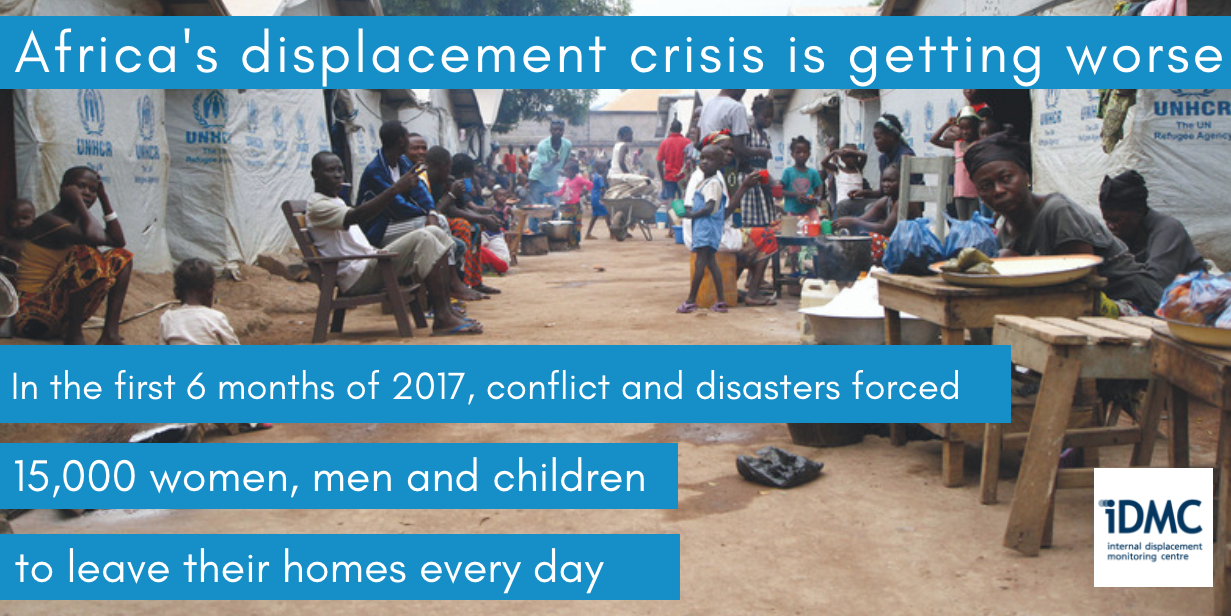Publication
06 December 2017
2017 Africa Report on Internal Displacement

Our second report on internal displacement in Africa highlights the severity of the continent’s continuing displacement crisis. Published to commemorate the fifth anniversary of the entry into force of the African Union’s Kampala Convention, the report provides new and compelling evidence for action and calls for a new approach to displacement that addresses its causes and longer-term implications, as well as its immediate humanitarian consequences.
Download the report (PDF, 6MB)
Download the report in French (PDF, 6MB)
Africa Report at a glance


2016 figures:
- 12.6 million people living in internal displacement in Africa as of the end of the year
- 3.9 million new displacements during the year
- 2.8 million people newly displaced by conflict and violence, representing 70 per cent of all new displacements
- Africa accounted for 40 per cent of displacement associated with conflict worldwide.
- 1.1 million people displaced by sudden-onset disasters
- More than 977,000 people displaced by floods, representing over 90 per cent of all new displacements associated with disasters
- East Africa was hosting 54 per cent of the continent’s internally displaced people (IDPs) as of the end of the year
- More than a million people newly displaced in DRC, including 922,000 as a result of conflict

Mid-2017 figures:
- 2.7 million people newly displaced in Africa between January and June, the equivalent of 15,000 people forced from their homes every day
- 75 per cent of new displacement attributed to conflict and violence
- 997,000 new displacements associated with conflict in DRC, more than in the whole of 2016
- 552,000 people displaced by sudden-onset disasters

Key messages:
- Africa’s decades-long displacement crisis demands a renewal of the political will and leadership that African governments demonstrated when they agreed to the Kampala Convention in 2009.
- National and international partners must work collectively across mandates and institutional barriers to deal more systematically not only with the immediate consequences of internal displacement, but also its causes and longer-term impacts.
- In addition to the immediate triggers of displacement, such as conflict and floods, its underlying drivers, such as poor governance, environmental degradation, unemployment and inequality also need to be examined
- A number of relatively new “megatrends” have been identified as significant drivers of displacement, including urbanisation, water scarcity, food insecurity and other adverse effects of climate change. Some are likely to affect Africa disproportionately.
- Displacement is ultimately a result of, and will have an impact on, a range of social, political and economic processes that determine not only the wellbeing of individuals and communities, but also national prosperity.
- Displacement associated with both conflict and disasters is linked to people’s vulnerability, which is heightened by factors such as poverty, inequality, instability and environmental degradation. Displacement in turn contributes to such factors, disrupting markets and livelihoods, undermining access to socioeconomic opportunities, putting stress on available resources and weakening the resilience of those affected.
- Displacement is reversing current development gains and threatens the achievement of future development objectives in Africa, including the Sustainable Development Goals. Dedicated policies to address the phenomenon, targeted support for IDPs and their hosts and a focus on helping them to achieve durable solutions would contribute to the accomplishment of development goals.
Information pack
- Africa Report Facts & Figures
- Africa Report press release (English version, French version)
- 2016 Africa Report on Internal Displacement
- 2017 Global Report on Internal Displacement